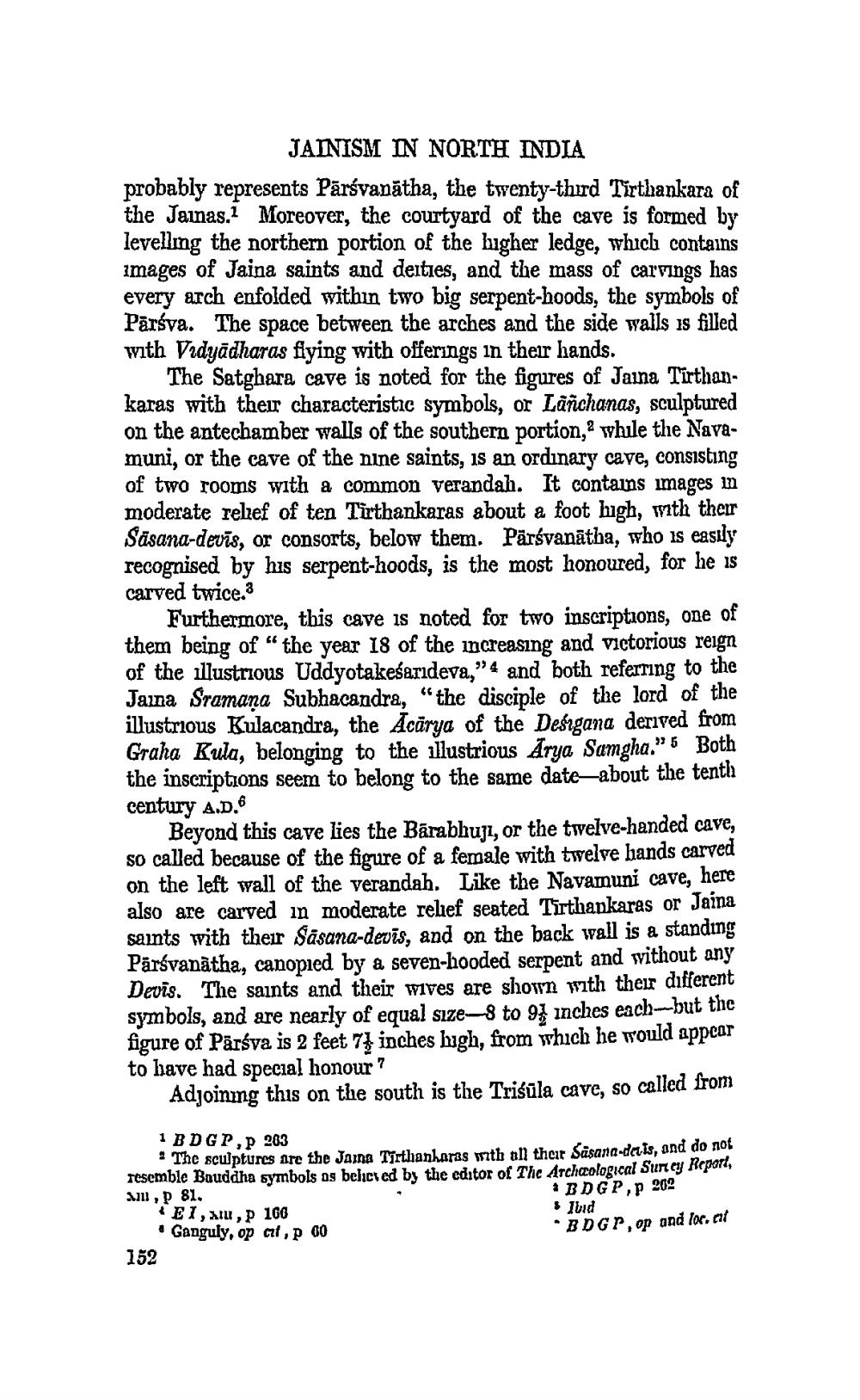________________ JAINISM IN NORTH INDIA probably represents Parsvanatha, the twenty-thurd Tirthankara of the Jainas. Moreover, the courtyard of the cave is formed by levelling the northern portion of the higher ledge, which contains images of Jaina saints and deities, and the mass of carvings has every arch enfolded within two big serpent-hoods, the symbols of Parsva. The space between the arches and the side walls is filled with Vidyadharas flying with offerings in their hands. The Satghara cave is noted for the figures of Jaina Tirthankaras with their characteristic symbols, or Lanchanas, sculptured on the antechamber walls of the southern portion, while the Navamuni, or the cave of the nine saints, is an ordinary cave, consisting of two rooms with a common Verandah. It contains images in moderate relief of ten Tirtharkaras about a foot high, with their Sasana-devis, or consorts, below them. Parsvanatha, who is easily recognised by his serpent-hoods, is the most honoured, for he is carved twice. Furthermore, this cave is noted for two inscriptions, one of them being of "the year 18 of the increasing and victorious reign of the illustrious Uddyotakesarideva,"4 and both referring to the Jazna Sramana Subhacandra, "the disciple of the lord of the illustrious Kulacandra, the Acarya of the Desrgana derived from Graha Kula, belonging to the illustrious Arya Samgha." 5 Both the inscriptions seem to belong to the same date about the tenth century A.D.6 Beyond this cave lies the Barabhuji, or the twelve-handed cave, so called because of the figure of a female with twelve hands carved on the left wall of the verandah. Like the Navamuni cave, here also are carved in moderate relief seated Tirthankaras or Jaina saints with their Sasana-devis, and on the back wall is a standing Parsvanatha, canopied by a seven-hooded serpent and without any Devis. The saints and their wives are shown with their different symbols, and are nearly of equal size-8 to 9} inches each but the figure of Parsva is 2 feet 7} inches high, from which he would appear to have had special honour ? Adjoinmg this on the south is the Trisula cave, so called from 1 BDGP, 263 * The sculptures are the Jaina Tirthanharas with all their Susana-deris, and do not Tesemble Bauddha symbols as behoved by the editor of The Archeological Surrey Reparu Au, 81. EDGP, 202 EI, ,p 166 * Jud Ganguly, op af, p 60 *BDGP, op and for.cat 152




